Washing ‘the Bosphore’ and attaching Oriental sketches 1: before treatment
To start the New Year, we take a look at the conservation work carried out on two of our rare books, in this two-part blog.
Two treasures from the Library’s Special Collections rare book holdings have recently been returned after having undergone complex conservation treatments at a private conservation studio in Edinburgh.
Le Bosphore (rff DR741.B75352) and Sir David Wilkie’s Sketches in Turkey, Syria and Egypt (rfx ND497.W6T9) were sent to Icon accredited book conservator Caroline Scharfenberg for extensive conservation work. Each volume suffered from structural damage relating to its format, construction and history of use. As treasured items the volumes have been cared for but have also been well used. The combination of wear and tear and previous attempts to repair them had left the volumes in a condition where they could no longer be used safely – something had to be done.
The detailed printed illustrations in both volumes, including some colour and hand coloured plates, make them popular for teaching and among students and researchers. Since Special Collections items used regularly for teaching are carefully monitored and prioritised for interventive conservation repair treatment; the poor condition of Le Bosphore and Sketches of Turkey, Syria and Egypt made them clear candidates for conservation.
Le Bosphore before treatment
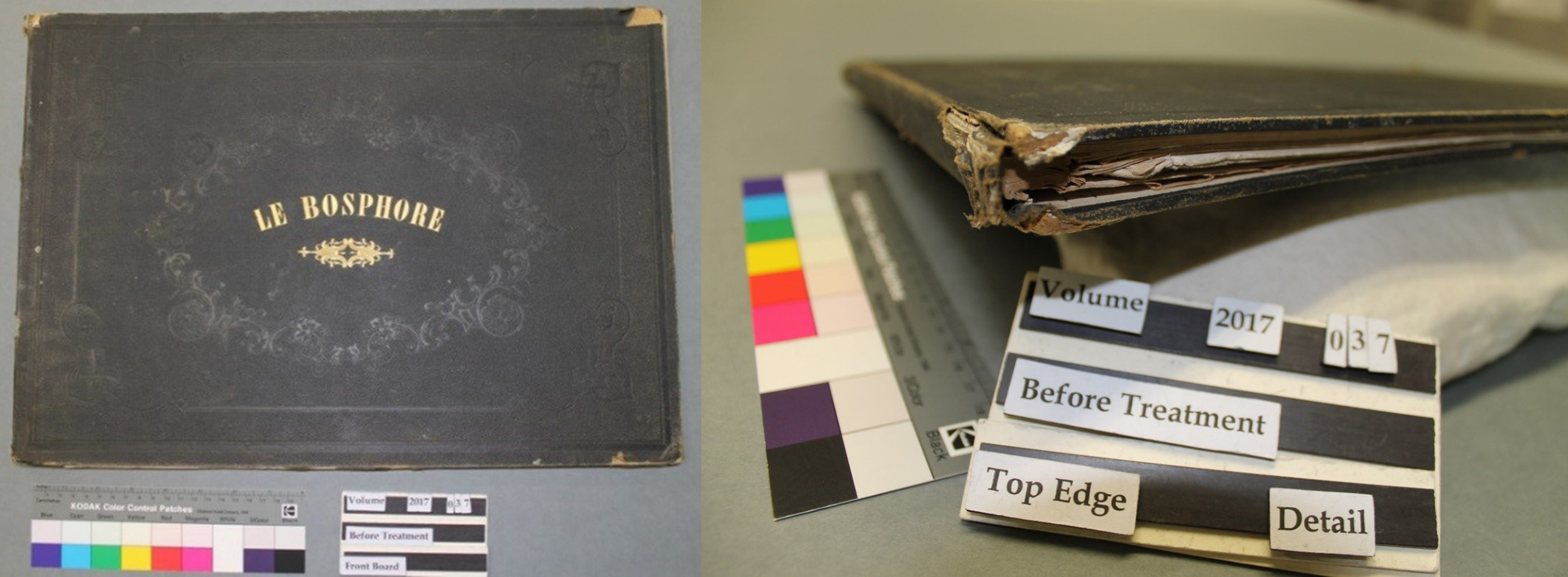
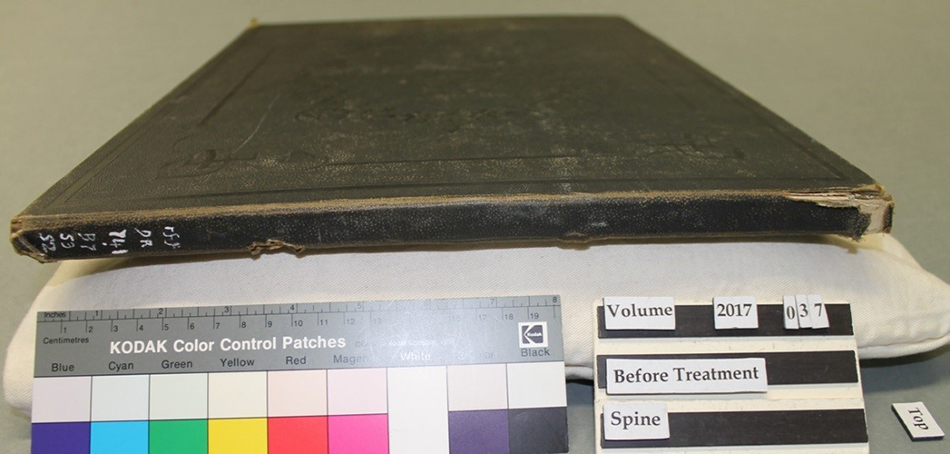
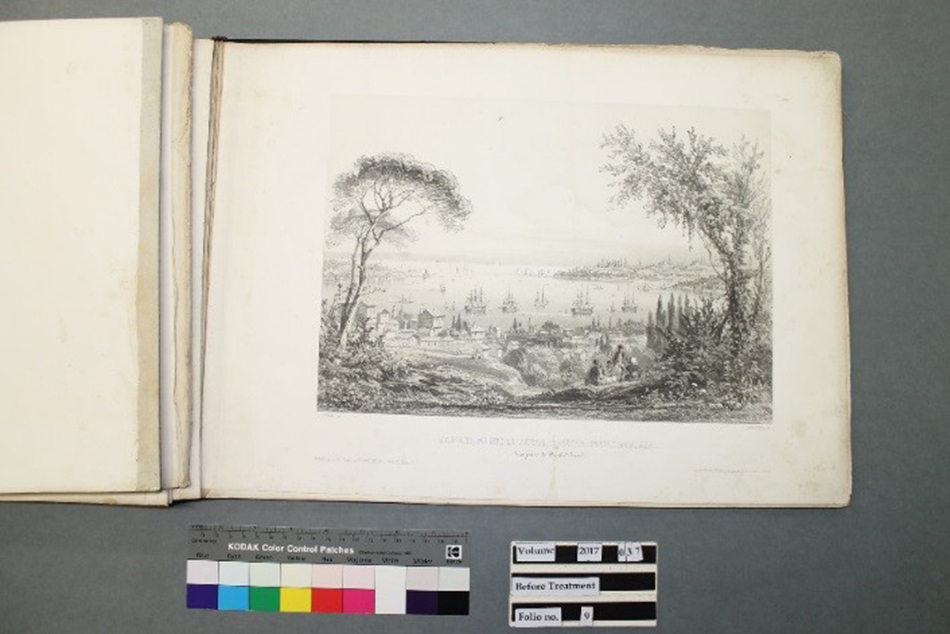
Sketches in Turkey, Syria and Egypt before treatment
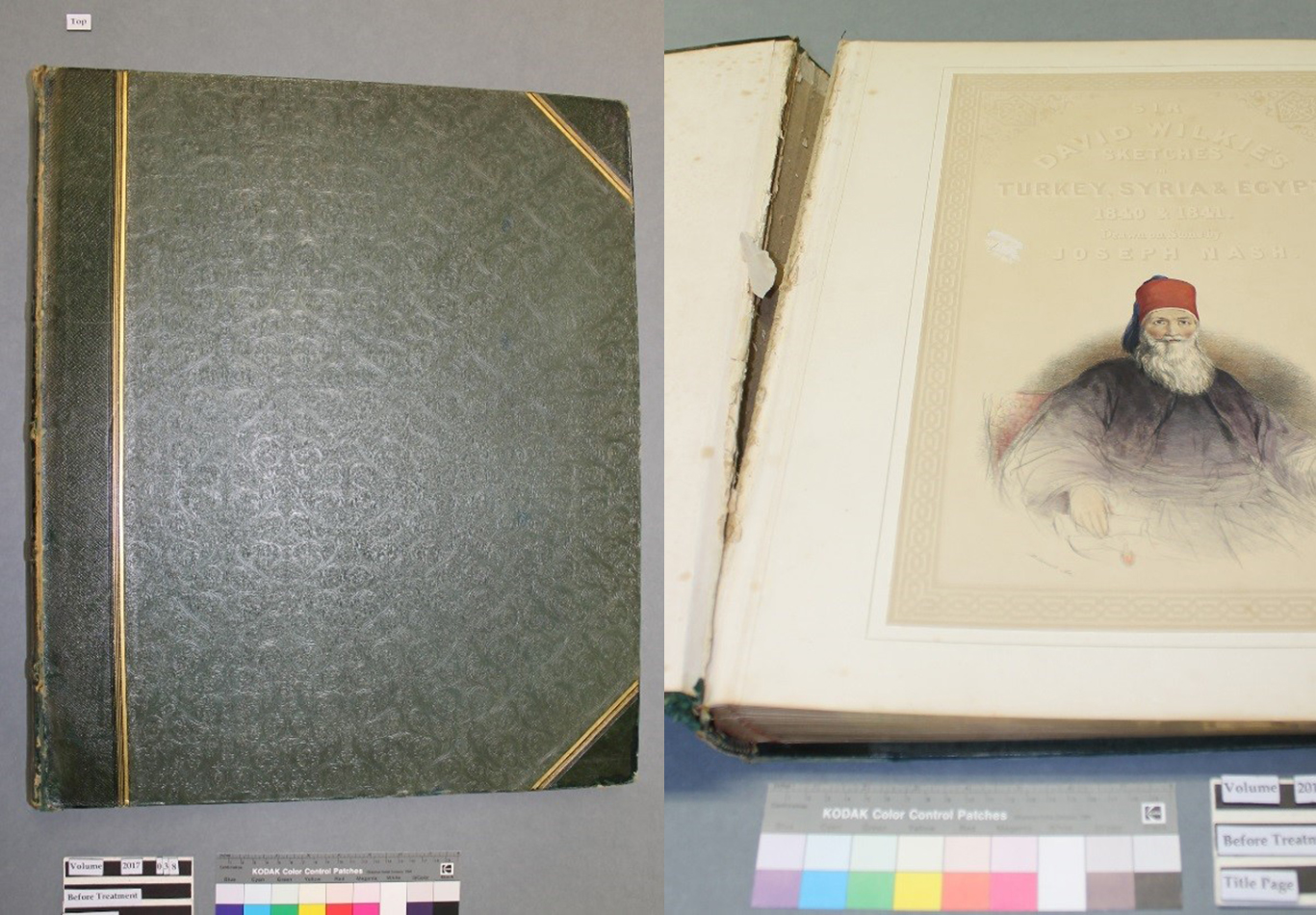
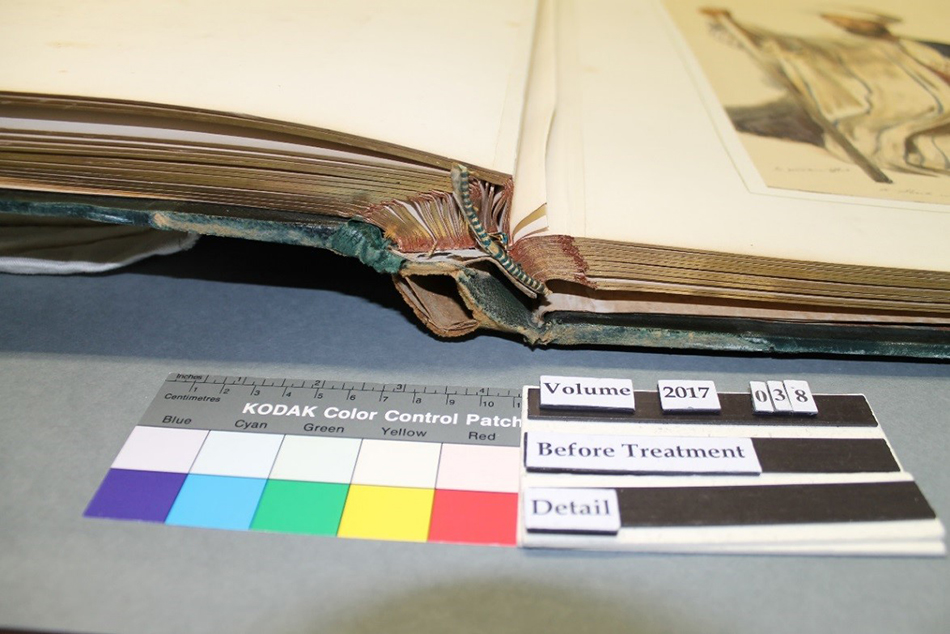
Condition – stained panoramas and detaching sketches
The text block of Le Bosphore had pulled away from its black book-cloth covered case binding. The blank pages at the front and back, the fly leaves, had folded back on themselves creating ‘jack-knife’ creases. At the start of the volume are two concertina fold-out lithograph panoramic views of the Bosphorous from different vantage points. Each panorama is constructed from four sheets of paper hinged together on the back. Over time the original hinges had broken and been replaced with strips of linen. The liberally-applied water-based adhesive and the linen repairs, which are stronger than paper and which react differently to water and moisture than the paper, caused staining on the front of the panoramas, tensions in the paper and cockling.
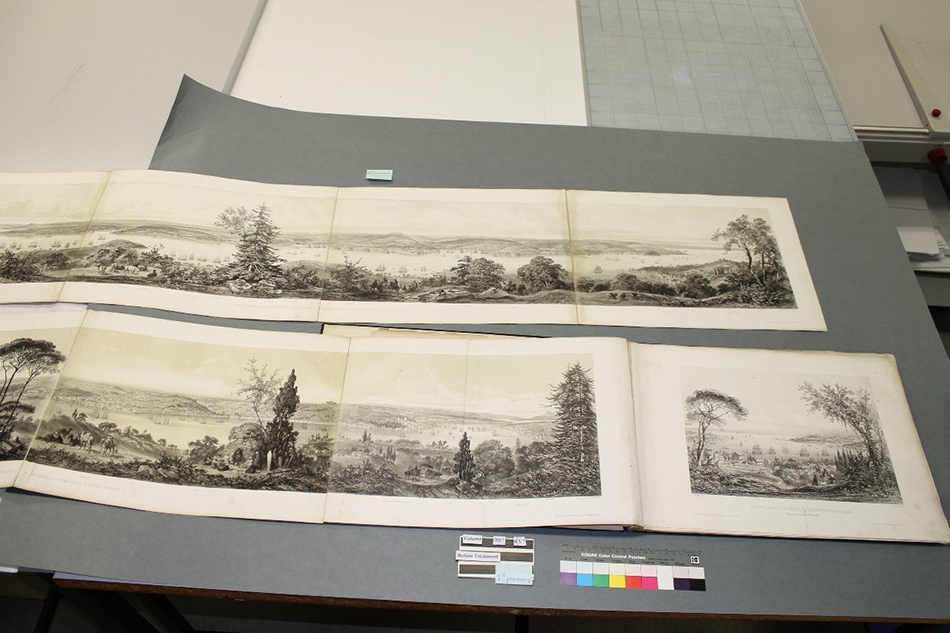
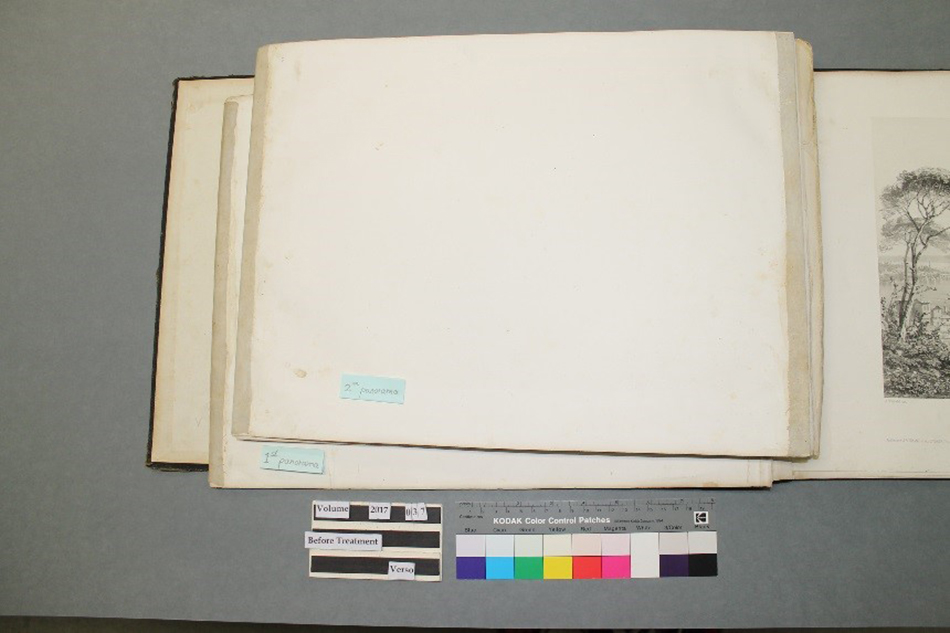
The previous repair to Sketches in Turkey, Syria and Egypt was less apparent before the conservation treatment had begun. The volume is very large and had required a strong attachment between the heavy boards of the cover and the thick gilt-edged pages of the book.
Originally the binding was a tight back, meaning the book-block spine was stuck directly to the inside of the leather spine cover. To further strengthen the book-block to cover attachment, the sewing supports onto which the book-block was sewn, were laced into the front and back boards of the cover. With regular use, the cumbersome book-block had started to pull away from the spine and from the cover. As a result of this damage the spine now formed a hollow shape when the book was opened and the front and back of the book was splitting.
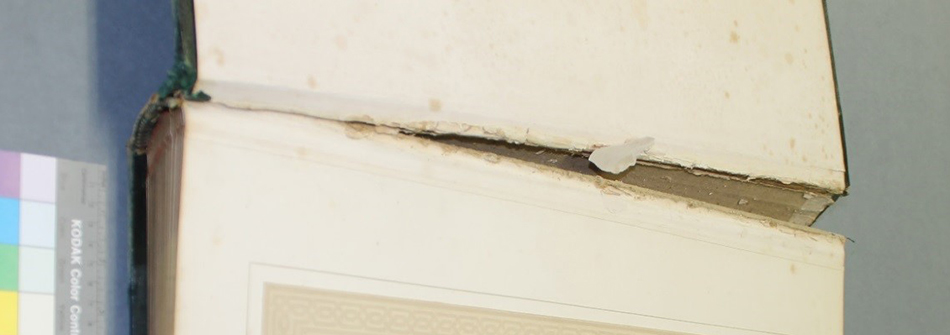

So what could be done? In part II we will focus on the conservation treatment carried out to repair these texts.
Erica Kotze ACR
Preventive Conservator
All images are copyright Caroline Scharfenberg
[…] part I of this post, we saw the pre-treatment condition of ‘Le Bosphore’ and ‘Sketches in Turkey, […]